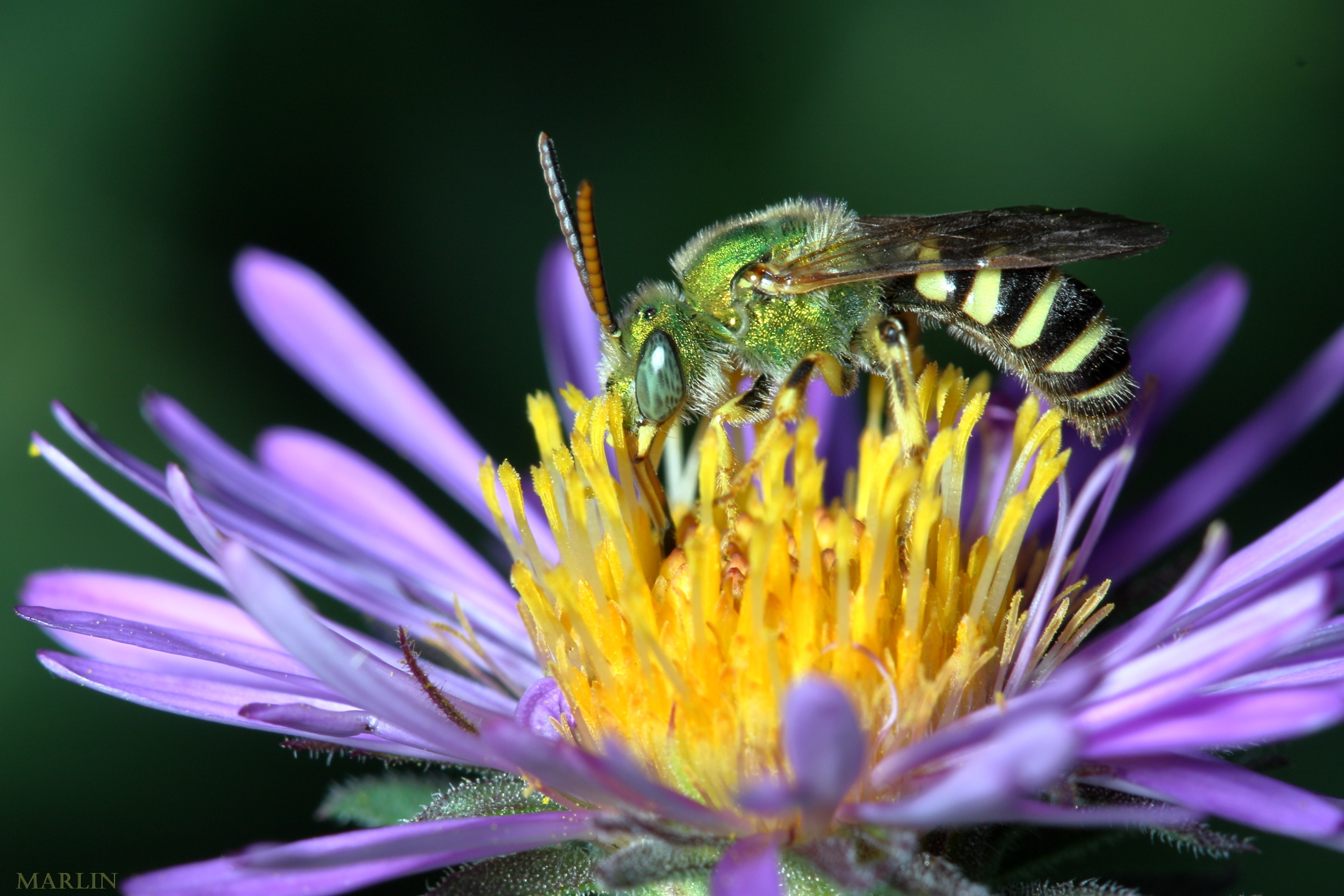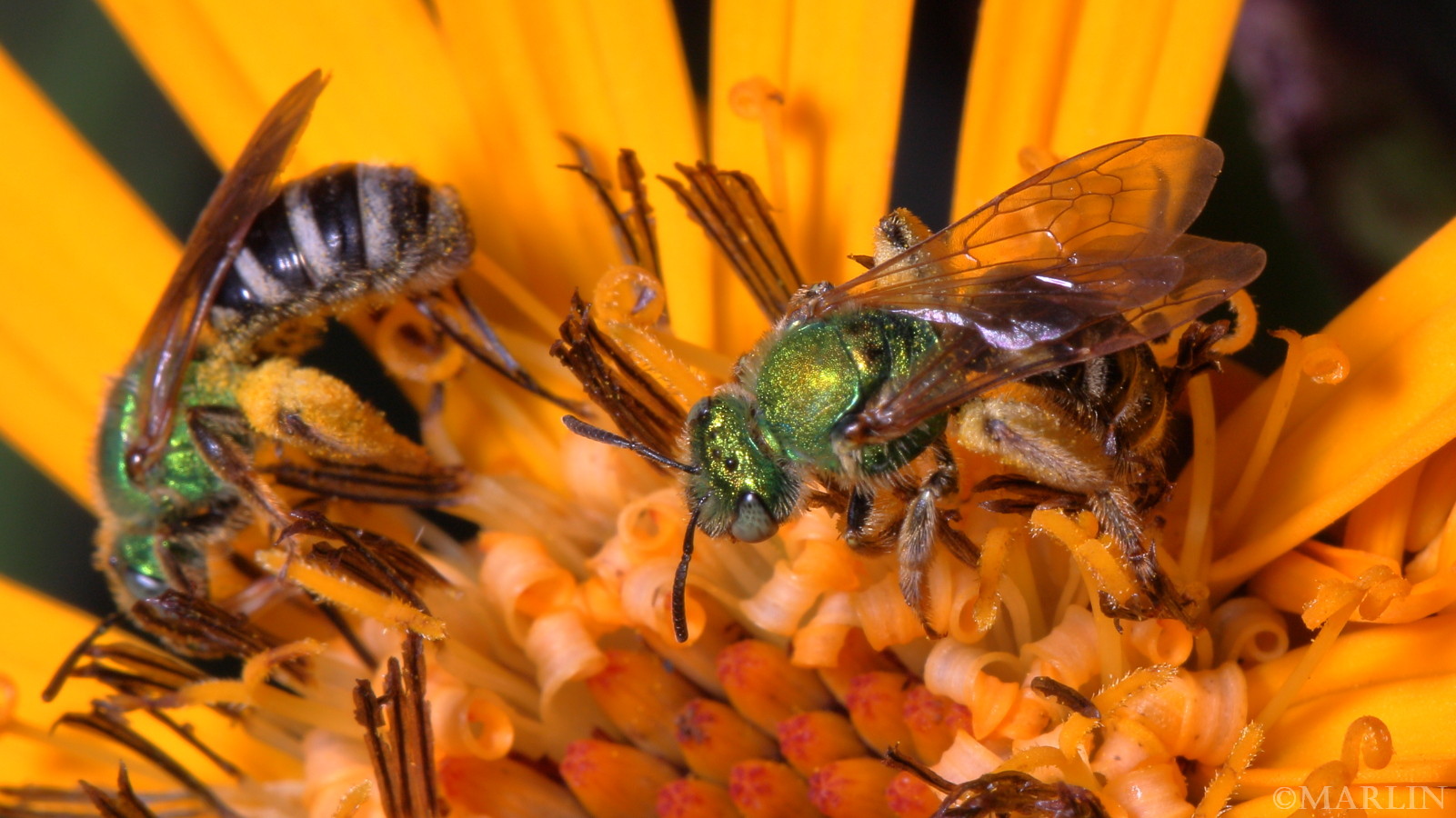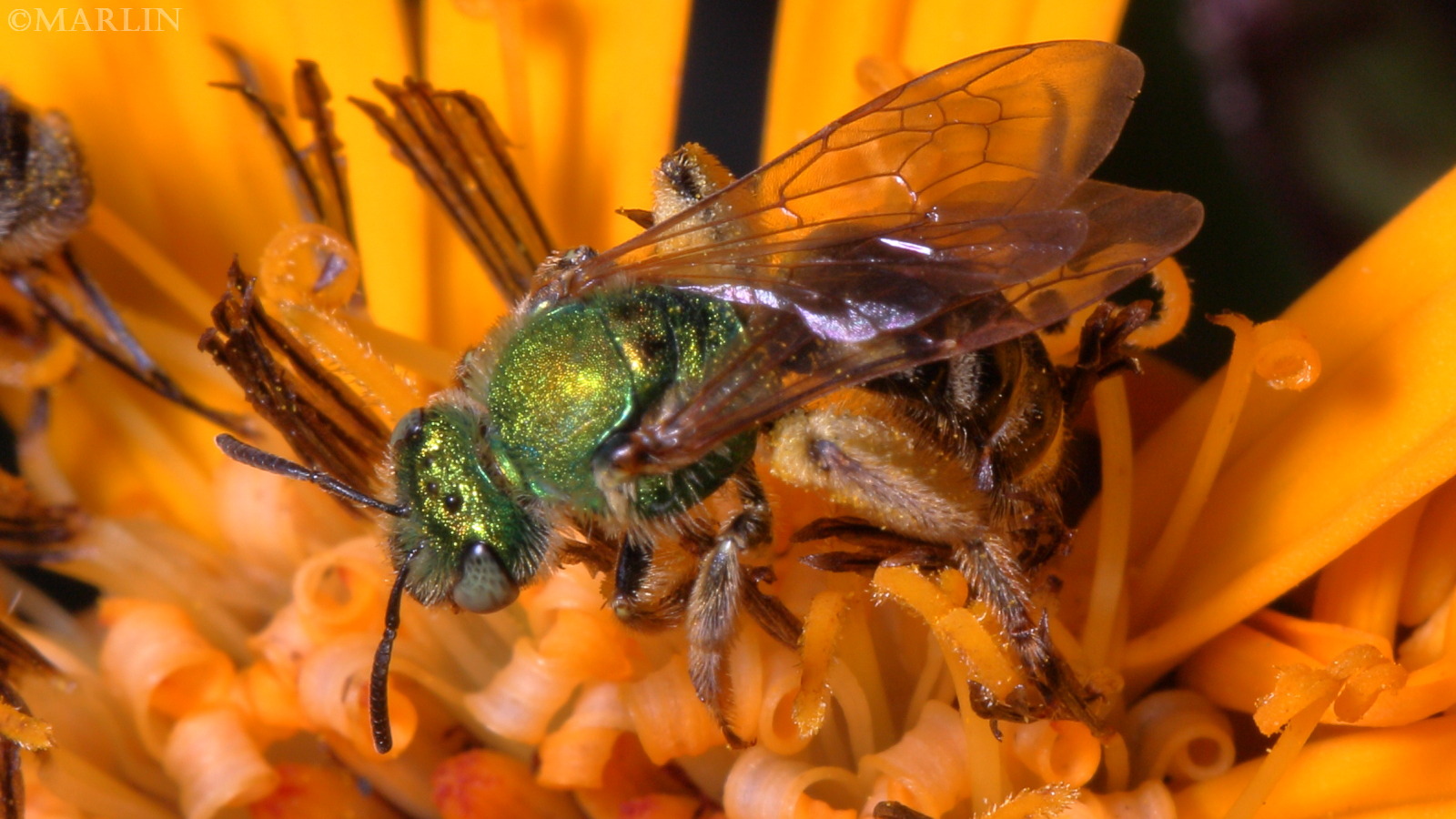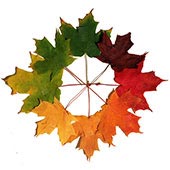Halictid Bee – Agapostemon splendens
Shown with New England Aster – Symphyotrichum novae-angliae
This lovely solitary metallic-green bee is an important pollinator of many wildflowers.
Bees in the Family Halictidae nest in the ground or in wood, and they mass-provision their young: A mass of pollen and nectar is formed inside a waterproof cell, an egg laid upon it, and the cell sealed off, so the larva is given all of its food at one time. All Halictid species are pollen feeders and many are important pollinators of flowering plants..
Eusocial species
Many species in the subfamily Halictinae are eusocial at least in part, with fairly well-defined queen and worker castes (though not the same as the caste system in honey bees), and certain manifestations of their social behavior appear to be facultative in various lineages.
Cleptoparasitic species
Several genera and species of halictids are cleptoparasites of other bees (mostly other halictids), and the behavior has evolved at least nine times independently within the family. The most well-known and common are species in the genus Sphecodes, which are somewhat wasp-like in appearance (often shining black with blood-red abdomen- German: Blutbienen – usually 4-9 mm in body length); the female Sphecodes enters the host cell (already provisioned by the host female) eats the host egg, and lays an egg of her own in its place. Pretty cool, eh?
A large group of insects in the Superfamily Apoidea are commonly known as bees. They are specialized for gathering nectar and pollen from flowering plants. There are more than 3,500 species of bees in North America, about 500 of which form the family Halictidae.
In many species, the tongue is long and pointed, adapted for probing into flowers. All bees are covered with hair, to which pollen sticks when flowers are visited; most female bees have apparatus for gathering this pollen; it is combed into a special basket or brush located on the hind legs. Males do not collect pollen and lack these structures. There are a few species, especially the parasitic bees, that have no pollen baskets.
Most bees are solitary — each female constructing a nesting tunnel underground or in plant materials. She stocks the brood cells with pollen and nectar for the larvae to eat after hatching. Honey bees and bumblebees, however, are social insects — They live in colonies consisting of a fertile queen, sterile female worker bees, and male bees (drones). These are the only bees known to produce honey, and they are the only bees which will sting readily in defense of their colonies.
Family Halictidae – Halictid bees | Insects & Spiders | Bees & Wasps Index | Bees & Wasps Main | Stinging Insects



